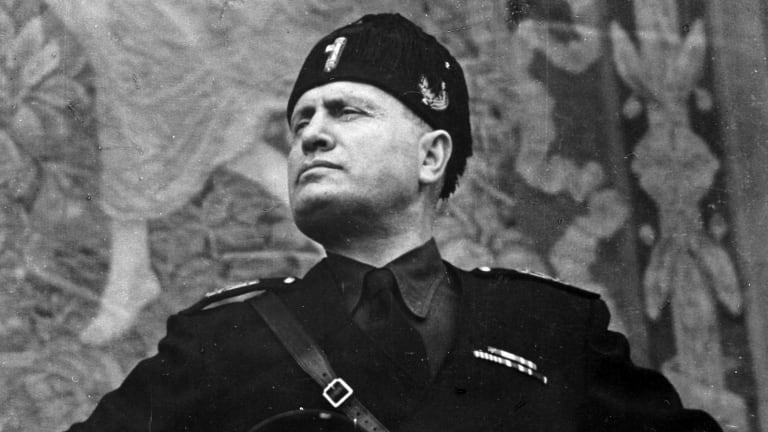Fascist Architecture, Then and Now

When Mussolini first came to power, the view from the balcony looked out across the expansive Roman forum with remnants of pillars and palaces built during the height of the Roman empire. On the far end, the famous broken facade of ancient colosseum towered over the important archeological park. But Mussolini thought the direct line between his balcony and the colosseum would make a great parade route, so he ordered his minions to bulldoze and bury a large swath of ruins and displace thousands of people to build what was then the Via Dell’Impero street. Few records were kept and most of the ruins remain interred below the asphalt. He lined the boulevard with statues of emperors and large marble maps outlining the territories of the Roman Empire by date. The maps, statues and boulevard are still there, though the street is now called the Via dei Fori Imperiali (Street of the Imperial Forums). Every few years, Roman mayors vow to tear up the street and reunite the forums, but the street has become a crucial thoroughfare for public transportation and is still used for all manner of parades, from Republic Day to Gay Pride.
A few miles from the Piazza Venezia is the working class neighborhood of Ostiense which has a major train station of the same name that Mussolini built in 1938 for the sole purpose of trying to impress Adolf Hitler. The station is largely unchanged, but the street leading up to it is no longer called Viale A. Hitler. The heavy columns on the portico made of Travertine marble give much more importance to what is largely used as a commuter station in modern times, but it’s still worth visiting for history buffs. The fascist symbols are easily visible in the mosaic tile floor even though many are hidden under the shelves in the station’s snack bar. Mussolini had envisioned this station to be a landing point for visiting dignitaries who would be whisked through an opening he created in the Aurelian wall near the adjacent San Paolo gate. There they would glide past the Palatine hill, around the Colosseum and down the parade route to his offices in the Palazzo Venezia.
Leading away from the balcony square towards Piazza Navona, famous for Bernini’s fountains and over-priced gelato, is the majestic Palazzo Braschi, now the Museum of Rome showcasing works from the Middle Ages to the 19th century. It was commissioned as a papal palace by Pope Pius VI, and eventually housed Italy’s interior ministry before becoming Mussolini’s personal political headquarters. Now, the ground floor of the museum has a posh cafe and wine bar and etchings on the walls clearly show where references to Il Duce have been removed or covered with ceramic plates.
In 1962, future Senator Daniel Patrick Moynihan outlined the Guiding Principles for Federal Architecture, which prioritized contextual, human-centered buildings and argued that “an official style must be avoided.” These directives have informed policy at the U.S. General Services Administration for over 50 years—however that could soon change.
According to a widely circulated report, an executive order drafted by President Trump’s White House—titled Making Federal Buildings Beautiful Again—would reverse that standard. The reported document states that “the classical architectural style shall be the preferred and default style” for any new or upgraded federal buildings nationwide.
The draft argues that the capital’s early buildings were built in the classical architectural style because it symbolized the nation’s “self-governing ideals.” It criticizes contemporary architecture, citing that, among others, San Francisco’s Federal Building by Morphosis—a feat of sustainable architecture—fails to express “national values.” Under the order, brutalism, deconstructivism, and anything characterized as “modern,” will not be tolerated, as these styles have “little aesthetic appeal.”
Moynihan’s guiding principles state that federal buildings “must provide visual testimony to the dignity, enterprise, vigor, and stability of the American government.” The draft from the current administration uses exactly the same language—dignity, enterprise, vigor, and stability—to support its own argument for an official architectural style.
The American Institute of Architects issued a sharp response to the draft: “Architecture should be designed for the specific communities that it serves, reflecting our rich nation’s diverse places, thought, culture, and climates. Architects are committed to honoring our past as well as reflecting our future progress, protecting the freedom of thought and expression that are essential to democracy.”
If the draft were to become an order, Trump would assemble appointed committee members to promote the regressive agenda. One such appointee would be Justin Shubow, the president of the National Civic Art Society, whose organization’s mission is to return the country’s architecture to its premodern roots.
